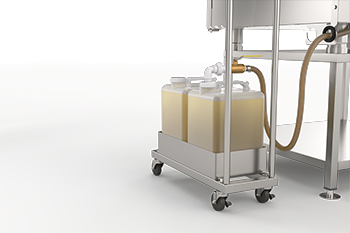Alto-Shaam
Restaurant Safety Guidelines
In this practical guide, we've shared a few restaurant safety strategies to deal with the most common injuries in the industry. With the right leadership and kitchen equipment, the vast majority of restaurant injuries can be prevented.

America's foodservice industry has a pretty dismal safety record, and it could be dramatically improved with a few preventative measures and the right equipment. According to the National Council on Compensation Insurance, the average cost of injuries can reach $42,586 each. The most common injuries among restaurant staff are cuts, slip-and-fall accidents, sprains, and burns. With over 14 million restaurant employees across the country, these accidents add up. It's crucial for restaurant owners and chefs to implement safety standards in the kitchen, so that fewer injuries happen on the job.
In this practical guide, we've shared a few restaurant safety strategies to deal with the most common injuries in the industry. With the right leadership and kitchen equipment, the vast majority of restaurant injuries can be prevented.
Preventative Steps for Restaurant Safety
Spending money on safety might seem like an unavoidable cost, but according to OSHA, every dollar invested in safety programs can save as much as $6 on potential injuries and deaths. Preventative safety measures and education literally saves lives in the kitchen. A culture of safety comes from the top down, so you need to demonstrate strong leadership skills and be the example.
Apart from safety regulations for restaurants, there are a variety of day-to-day business strategies you can implement to reduce injuries. Here are just a few areas that can be improved safety-wise:
- Grease & Cooking Waste: About 60% of restaurant incidents that lead to workers' compensation are due to cooking oil that is improperly handled. A chef can spill oil and slip on it, burn themselves with splattered oil, or hurt themselves when lifting heavy jugs. To limit the potential for accidents, we recommend using a self-cleaning oven with automatic grease collection. These ovens save money on labor, while also reducing the chance of oil spills and burns. For example, the automatic, pump-style grease collection systems on our rotisserie and combi ovens make cleanup and hot grease disposal safe and easy.
- Steam: Boiling water is a potential hazard for kitchen staff, especially when a hot well uses steam to keep food warm. Steam burns can be gruesome, and sometimes it's difficult to tell how hot something is until the steam is scalding your hands. Apart from wearing oven gloves, a great way to minimize this risk is investing in waterless food wells, which don't rely on steam or an extremely hot element to keep food warm. Instead, these dry wells are surrounded with a radiant heat source that stays at a consistent, gentle temperature.
- Heat: Opening an oven cooking at extremely high temperatures can be a dangerous prospect. You never know how much hot air is going to blast out of the oven door when it's first opened. To reduce the risk of burns, we recommend using an oven, like our combi, with a safe venting system that expels heat and steam before you open the door. We also suggest investing in an oven with triple-panel glass to keep the heat in the oven and the door cool to the touch.
At Alto-Shaam, we're proud to design foodservice equipment solutions with employee safety at the forefront of our minds. To learn more about our innovative restaurant equipment, register for A Taste of Alto-Shaam demonstration near you.
